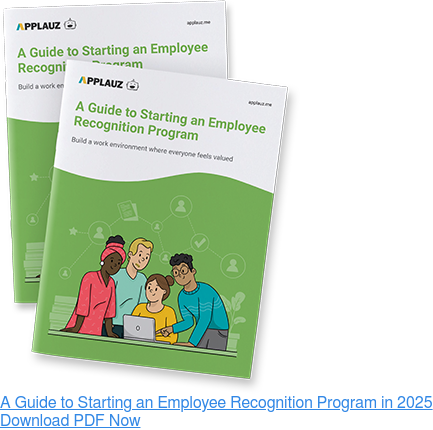You’ve probably heard of the quiet quitting trend. But what about Bare Minimum Mondays? The phrase went viral when TikTok user Marisa Joy Mayes posted about her Monday ritual – doing the bare minimum at work.
“I gave myself permission to do the absolute bare minimum for work, and it was like some magic spell came over me. I felt better. I wasn’t overwhelmed, and I actually got more done than I expected,” she said in a Business Insider article.
What are Bare Minimum Mondays?
While some people use the start of the week to hit the ground running with meetings and deliverables, proponents of Bare Minimum Mondays believe in focusing on self-care and only tackling essential tasks to ease into the week.
“On a Bare Minimum Monday, I don't take meetings and take it slow for the first two hours. I'll do some reading, some journaling, maybe some stuff around the house. It's two hours of no technology — no checking email — just doing whatever I need to do to feel good starting my day,” shared Mayes.
To give you an idea of what the rest of the day entails when you’re embracing Bare Minimum Mondays, Mayes then lets herself tackle any creative work that she feels up for around 10 a.m., as long as it’s a task she enjoys.
An hour later, she takes a break for lunch or a walk. Then, she does her main work tasks for about two hours without multitasking or distractions. “If I'm not done after that, I'll do another hour, but it's usually no more than that,” she added.
The idea of Bare Minimum Mondays is to avoid setting yourself up for failure by overloading your to-do list. Fans of the approach also say that it helps prevent burnout and combats the “Sunday Scaries” – a feeling of dread and anxiety about the looming work week.
The Dark Side of Bare Minimum Mondays
If you’re a manager or HR professional, you may wonder what to make of this trend. You may even be concerned about what it means – and, on some level, you’re right to be worried. If people feel the need to regularly engage in Bare Minimum Mondays, it can signal a deeper issue in terms of employee engagement and workplace culture. And that issue is not one to ignore.
Burnout from workplace stress is on the rise – research from Future Forum showed that it’s at an all-time high since spring 2021. Mayes herself explained that a previous burnout led her to come up with the concept of Bare Minimum Mondays.
As you can imagine, burned-out employees are not the most engaged – and this isn’t an individual problem as much as an organizational one. According to Harvard Business Review, the physical and psychological challenges of burned-out workers cost an estimated $125 billion to $190 billion a year in healthcare spending in the U.S.. It’s hard to quantify the exact toll of burnout on organizations, as it leads to issues ranging from loss of productivity to reduced employee retention, but it’s bad news for businesses too.
With this context in mind, of course Bare Minimum Mondays went viral – it’s likely a symptom of rampant workplace stress. Thankfully, smart leaders can address the root cause of the issue. As Harvard Business Review puts it, “executives need to own up to their role in creating the workplace stress that leads to burnout—heavy workloads, job insecurity, and frustrating work routines that include too many meetings and far too little time for creative work.”
Bare Minimum Mondays and Employee Recognition
Once you address these foundational pillars, there’s another powerful tool to add to your arsenal: employee recognition. According to Deloitte, employee engagement, productivity and performance are 14% higher in organizations with employee recognition programs than in ones without.
In other words, recognizing employees on a regular basis can help you say goodbye to Bare Minimum Mondays and hello to a happier, more balanced workplace regardless of the day of the week.
Wondering how to maximize the potential of employee recognition to avoid tendencies like Bare Minimum Mondays? First, make sure that recognition becomes part of your culture through a comprehensive program that makes it easy to give and receive recognition regularly. Employee recognition is most effective when it happens often – not just once a year or a quarter. Consider using a platform such as Applauz Recognition, which can help you turn your vision into a reality.
Making employee recognition a fun game is also a good idea, especially if there are prizes and incentives involved. Some teams have a dedicated group chat for employee shout-outs. Others go all out in terms of branding their recognition program and even coming up with their own currency for earning rewards. Whether you choose something simple or elaborate, the idea is to make it enjoyable and enticing. Employee recognition works as long as you actually do it.
You’ll also want to be intentional about what you recognize people for. Sure, commending outstanding performance can be a good thing. But if you’re dealing with challenges linked to a high-pressure, high-stress work environment, you may actually want to recognize the things that you want to encourage, such as effective time management and healthy work-life balance. Remember that what you recognize gets reinforced in your culture, so choose wisely.
Just like many of the HR trends that popped up around the pandemic, Bare Minimum Mondays is something to look at as part of a bigger whole. Workers have been reconsidering their relationship with work for the past few years, and hustle culture has been on its way out. As employers and employees leave old paradigms behind and figure out their new roles in the workplace of the future, opportunities for creating better ways of doing things emerge.
Organizations are left with two choices: Be at the forefront of the change even if it requires doing things differently, or scramble with decreased employee engagement and the loss of talent and productivity that comes with it. As a leader, you can be ahead of the curve.
About the author
Anouare Abdou
Anouare Abdou is a seasoned HR and business writer passionate about leadership, productivity, and the future of work. Her words have appeared in Business Insider, The Ladders, Thrive Global and more.



